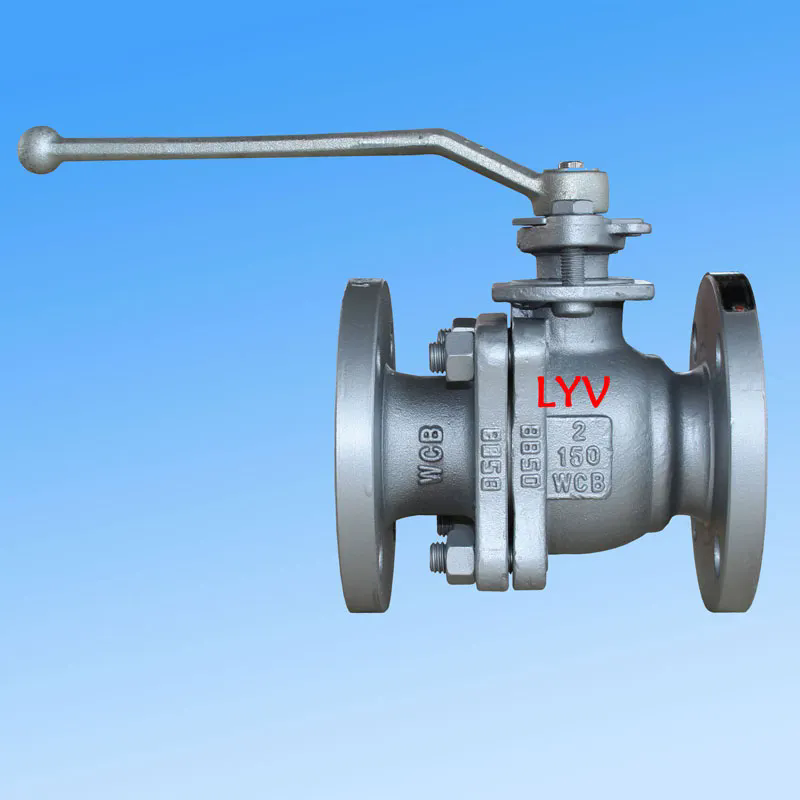2-Piece Floating Ball Valves: A Comprehensive Guide to Efficient Fluid Control
2024-08-22
In various industrial and commercial applications, controlling the flow of fluids with precision and reliability is crucial. The 2-piece floating ball valve is a popular choice for achieving this level of control. Renowned for its robust design and efficiency, this valve type offers significant advantages in fluid management. In this blog, we’ll dive into the features, benefits, and applications of 2-piece floating ball valves, providing you with a clear understanding of why they are a preferred solution in many industries.
What Is a 2-Piece Floating Ball Valve?
A 2-piece floating ball valve is a type of valve that uses a spherical ball with a hole in the center (known as the ball) to regulate the flow of fluids. This valve design consists of two primary components:
1. Body:
The valve body is divided into two pieces that are joined together. This construction allows for ease of maintenance and repair, as the valve can be disassembled without removing it from the piping system.
2. Floating Ball:
The ball inside the valve is referred to as "floating" because it is not fixed in place. It moves slightly within the valve body to seal against the seat and control fluid flow.
The 2-piece floating ball valve operates by rotating the ball to align or misalign the hole with the flow path, effectively opening or closing the valve.
How Does a 2-Piece Floating Ball Valve Work?
The operation of a 2-piece floating ball valve is straightforward and involves the following steps:
1. Valve Closed:
When the valve is in the closed position, the ball is rotated such that the hole is perpendicular to the flow path. This configuration blocks the fluid from passing through.
2. Valve Open:
When the valve is rotated to the open position, the hole in the ball aligns with the flow path, allowing fluid to pass through. The ball “floats” within the valve body, ensuring a tight seal against the seats.
3. Sealing Mechanism:
The floating ball is pressed against the valve seats by the fluid pressure, creating a reliable seal. This design minimizes leakage and ensures effective shutoff.
4. Actuation:
The valve can be operated manually using a lever or handle, or it can be automated with electric or pneumatic actuators for remote control and automation.
Benefits of 2-Piece Floating Ball Valves
1. Reliable Sealing:
The floating ball design ensures a secure seal, reducing the risk of leakage. The ball’s movement against the seat provides effective shutoff and flow control.
2. Ease of Maintenance:
The 2-piece construction allows for easy disassembly and maintenance without removing the valve from the piping system. This feature simplifies repairs and reduces downtime.
3. Durability:
Constructed from robust materials such as stainless steel or brass, 2-piece floating ball valves are built to withstand high pressures and corrosive environments, ensuring long-term performance.
4. Versatility:
These valves are suitable for a wide range of applications, including water, oil, gas, and chemicals. Their adaptability makes them a versatile choice for various industries.
5. Low Torque Operation:
The design of the 2-piece floating ball valve requires minimal torque to operate, reducing the effort needed for manual or automated control.
6. Compact Design:
The 2-piece configuration results in a more compact valve compared to other designs, making it suitable for installations with limited space.
7. Cost-Effectiveness:
The simplicity of the design and ease of maintenance contribute to lower overall costs. The durability and reliability of these valves also offer a good return on investment.
Applications of 2-Piece Floating Ball Valves
1. Water Treatment:
In water treatment facilities, 2-piece floating ball valves are used to control the flow of water and chemicals throughout the treatment process. Their reliability and resistance to corrosion make them ideal for this application.
2. Oil and Gas Industry:
The oil and gas industry relies on these valves for controlling the flow of crude oil, natural gas, and other hydrocarbons. Their ability to handle high pressures and harsh conditions makes them a preferred choice.
3. Chemical Processing:
In chemical processing plants, 2-piece floating ball valves are used to manage the flow of various chemicals and acids. Their chemical resistance and durability are essential for maintaining process integrity.
4. HVAC Systems:
In heating, ventilation, and air conditioning (HVAC) systems, these valves control the flow of heating and cooling fluids. Their compact size and efficient operation are beneficial for HVAC applications.
5. Industrial Piping:
2-piece floating ball valves are commonly used in industrial piping systems to regulate the flow of fluids and gases. Their ease of maintenance and robust construction make them suitable for various industrial settings.
6. Food and Beverage:
In the food and beverage industry, these valves are used for controlling the flow of liquids and maintaining hygiene standards. They are often made from stainless steel to meet sanitary requirements.
How to Choose the Right 2-Piece Floating Ball Valve
1. Material:
Select a valve made from materials compatible with the fluids you will be handling. Common materials include stainless steel, brass, and carbon steel.
2. Size and Pressure Rating:
Choose a valve with the appropriate size and pressure rating for your application. Consider the flow requirements and pressure conditions of your system.
3. Temperature Range:
Ensure that the valve can operate within the temperature range of your application. High-temperature environments may require valves with special materials or construction.
4. End Connections:
Consider the type of end connections required for your piping system, such as flanged, threaded, or welded connections.
5. Actuation Type:
Decide whether you need a manual or automated valve. Automated valves may require electric or pneumatic actuators for remote operation.
6. Certifications and Standards:
Verify that the valve meets relevant industry standards and certifications for quality and safety. This ensures that the valve is suitable for your specific application.
Conclusion
The 2-piece floating ball valve is a versatile and reliable solution for controlling fluid flow in various industries. With its durable construction, ease of maintenance, and efficient operation, it offers significant advantages over other valve types. By understanding its benefits, applications, and key selection criteria, you can make an informed decision and choose the right valve for your needs. Embrace the efficiency and reliability of 2-piece floating ball valves to optimize your fluid control systems and enhance the performance of your operations.



